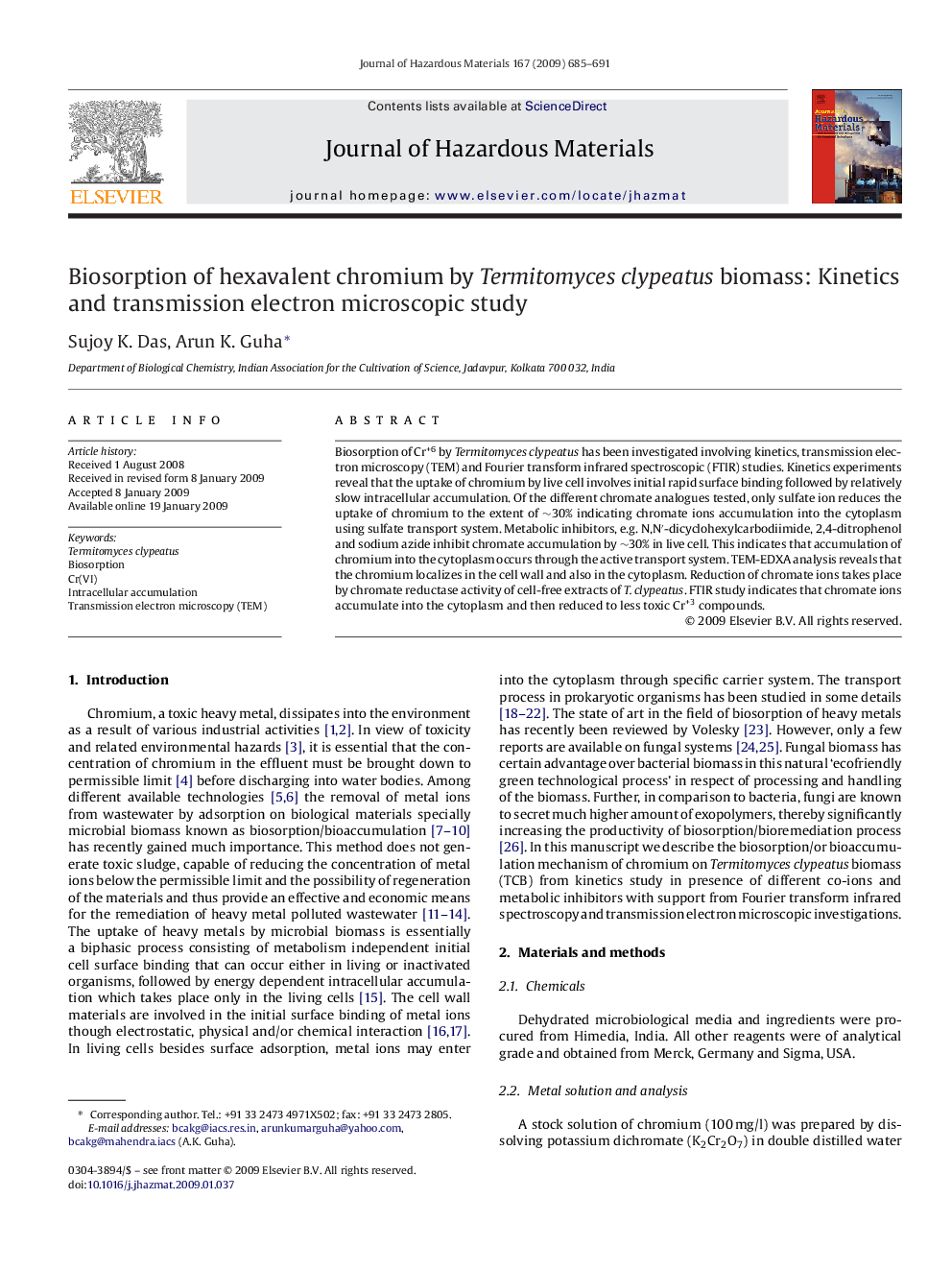| Article ID | Journal | Published Year | Pages | File Type |
|---|---|---|---|---|
| 581838 | Journal of Hazardous Materials | 2009 | 7 Pages |
Abstract
Biosorption of Cr+6 by Termitomyces clypeatus has been investigated involving kinetics, transmission electron microscopy (TEM) and Fourier transform infrared spectroscopic (FTIR) studies. Kinetics experiments reveal that the uptake of chromium by live cell involves initial rapid surface binding followed by relatively slow intracellular accumulation. Of the different chromate analogues tested, only sulfate ion reduces the uptake of chromium to the extent of â¼30% indicating chromate ions accumulation into the cytoplasm using sulfate transport system. Metabolic inhibitors, e.g. N,Nâ²-dicyclohexylcarbodiimide, 2,4-ditrophenol and sodium azide inhibit chromate accumulation by â¼30% in live cell. This indicates that accumulation of chromium into the cytoplasm occurs through the active transport system. TEM-EDXA analysis reveals that the chromium localizes in the cell wall and also in the cytoplasm. Reduction of chromate ions takes place by chromate reductase activity of cell-free extracts of T. clypeatus. FTIR study indicates that chromate ions accumulate into the cytoplasm and then reduced to less toxic Cr+3 compounds.
Keywords
Related Topics
Physical Sciences and Engineering
Chemical Engineering
Chemical Health and Safety
Authors
Sujoy K. Das, Arun K. Guha,
